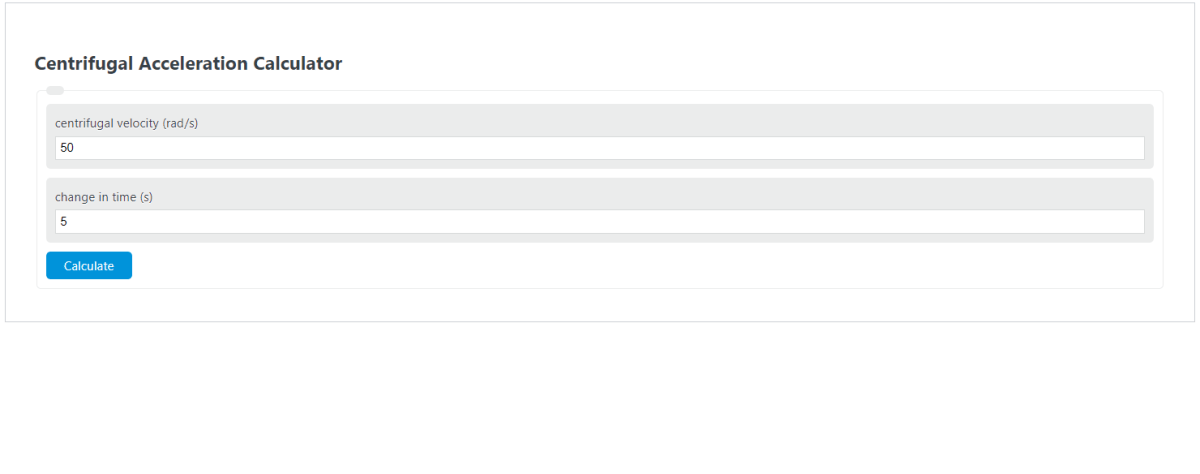Enter the change in centrifugal velocity and the change in time into the calculator to determine the Centrifugal Acceleration.
- All Acceleration Calculators
- Centripetal Acceleration Calculator
- Average Angular Acceleration Calculator
- Tangential Acceleration Calculator
- Torque to Angular Acceleration Calculator
- Piston Acceleration Calculator
- Linear Acceleration to Angular Acceleration Calculator
- Centripetal Acceleration From Mass Calculator
Centrifugal Acceleration Formula
The following equation is used to calculate the Centrifugal Acceleration.
CA = CV / dT
- Where CA is the Centrifugal Acceleration (rad/s^2)
- CV is the change in centrifugal velocity (rad/s)
- dT is the change in time (s)
To calculate the centrifugal acceleration, divide the change in centrifugal velocity by the change in time.
What are the units for Centrifugal Acceleration?
In the International System of Units, also known as SI units, the units for Centrifugal Acceleration are rad/s^2.
How to Calculate Centrifugal Acceleration?
Example Problem:
The following example problem outlines the steps and information needed to calculate the Centrifugal Acceleration.
First, determine the change in centrifugal velocity. In this example, the change in centrifugal velocity is calculated or measured to be 42 (rad/s).
Next, determine the change in time. For this problem, the change in time is determined to be 10 (s).
Finally, calculate the Centrifugal Acceleration using the formula above:
CA = CV / dT
Inserting the values from above and solving the equation with the imputed values gives:
CA = 42 / 10 = 4.2(rad/s^2)
FAQ
What is the difference between centrifugal and centripetal acceleration?
Centrifugal acceleration is the apparent force that acts outward on a body moving in a circular path and is felt by an observer in the rotating frame. In contrast, centripetal acceleration is the actual force that acts inward on a body moving in a circular path, keeping it in motion around the center point.
Can centrifugal acceleration be negative?
No, centrifugal acceleration cannot be negative because it is defined as the outward force experienced in a rotating system. The direction of centrifugal force is always away from the center of rotation, making the acceleration positive by convention.
How does the radius of rotation affect centrifugal acceleration?
The radius of rotation directly influences centrifugal acceleration. A larger radius at a constant rotational speed results in lower centrifugal acceleration because the outward force is distributed over a larger area. Conversely, a smaller radius increases the centrifugal acceleration due to the tighter curve of the path.
